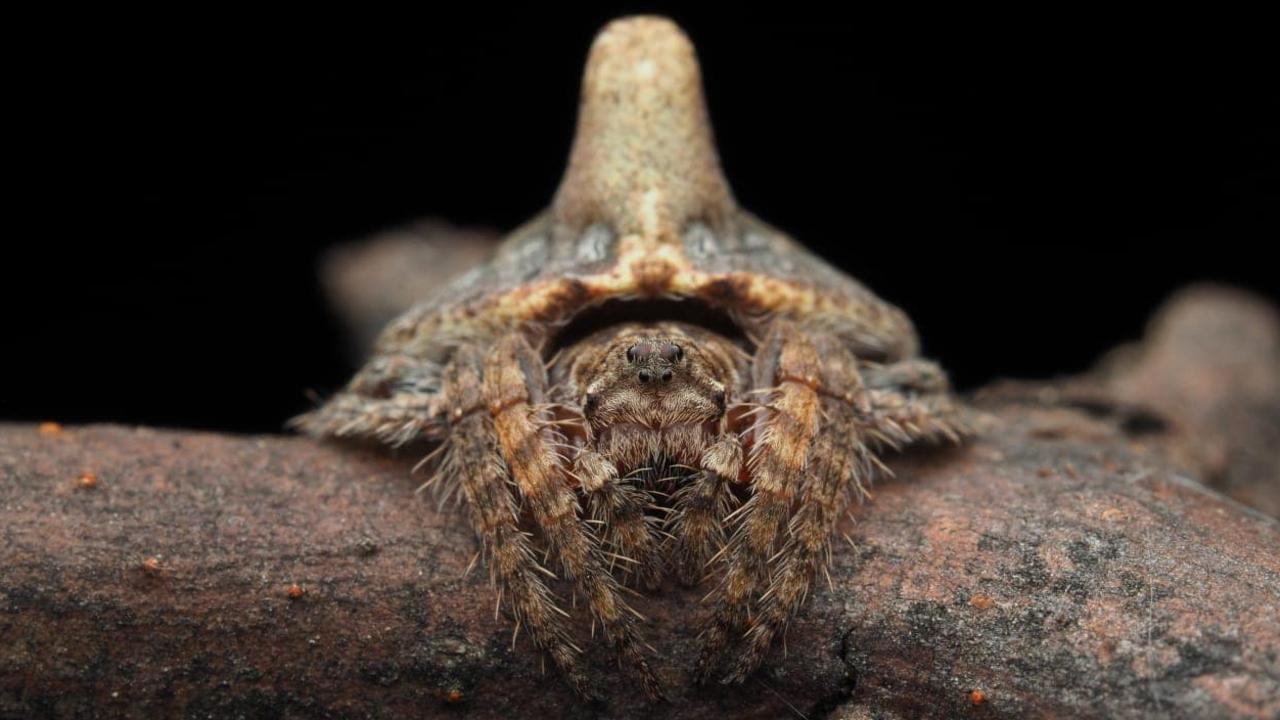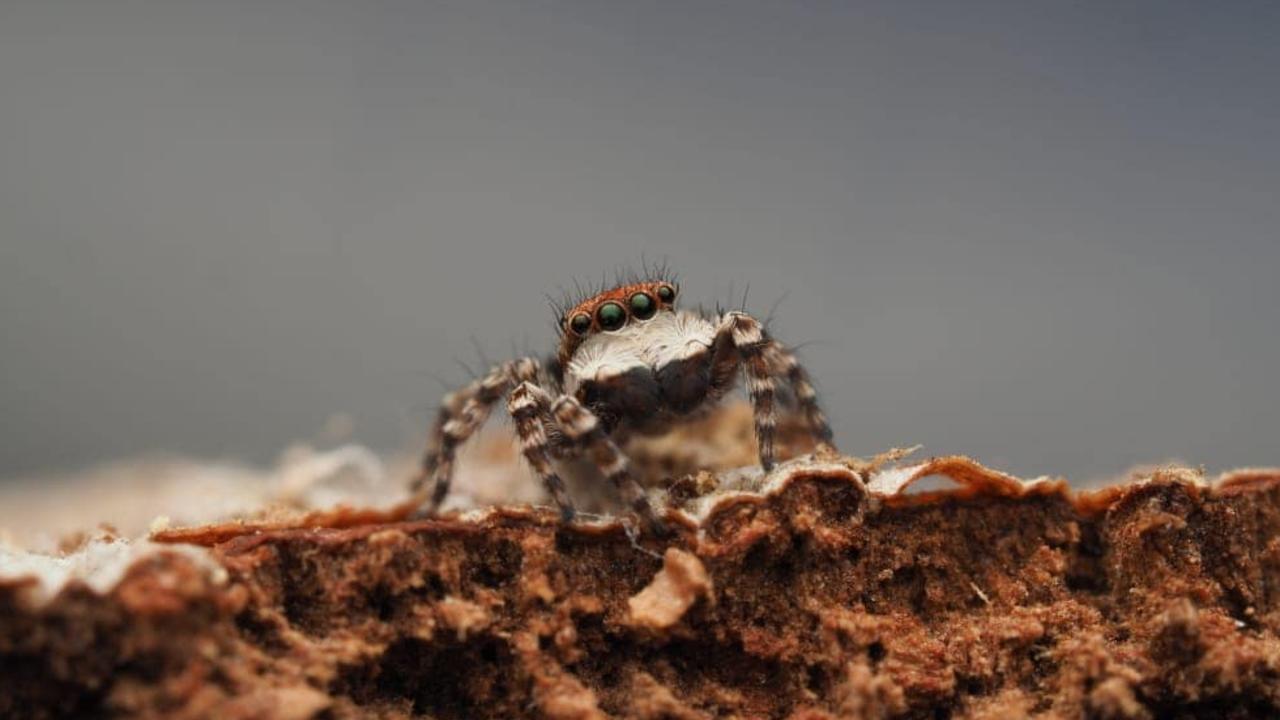Three new spider species found in Australian Bush Blitz expedition
Three new spider species have been discovered in Australia, including a ferocious hunter that camouflages as a tree branch and another that looks like a licorice-all-sort lolly

READING LEVEL: GREEN
A huntsman spider that looks like a “licorice-all-sort” lolly and a “ferocious*” wraparound spider that camouflages* as a tree branch are among three new spider species discovered in Australia’s remote alpine region.
A team of 20 scientists and teachers travelled to the region near the Victorian-NSW border on an 11-day “Alpine Bush Blitz” to catalogue* species and broadcast the expedition into Australian classrooms.

Three previously undescribed spider species were found by Museums Victoria Research Institute arachnologist* Joseph Schubert who said he hoped to find more before the Blitz concluded*.
“Most people associate spiders with the outback dunny door, but spiders are hugely diverse*,” Mr Schubert said.
“Discovering and documenting undescribed species is crucial* for their conservation* and may prevent invisible species from becoming extinct*.
“If a species is not known, it cannot be adequately protected.”
The species found by Mr Schubert included a new warrior huntsman with a shield on it’s chest, a wraparound spider and the 3mm jumping spider which he said looked like “eight-eyed puppies”.
“The wraparound spider is a ferocious nocturnal* mini-hunter that impersonates* a tree branch during the day to hide from predators*,” he said.

Environment Minister Tanya Plibersek lauded* the finds as “fantastic”.
“Around three-quarters of Australia’s biodiversity* is still waiting to be discovered by science,” Ms Plibersek said.
“Programs like Bush Blitz are giving us a deeper understanding of Australian habitats* so that we can make nature-positive decisions for the future.”
The Bush Blitz is described as Australia’s largest nature discovery program and funded through a partnership between Parks Australia, BHP and Earthwatch Australia.
There have been 45 Bush Blitz expeditions since 2009, with the aim of documenting the three-quarters of Australian biodiversity currently unknown to science.
GLOSSARY
- ferocious: very fierce
- camouflages: disguises, becomes hard to see, by blending in with the surrounds
- catalogue: make a detailed list of something
- arachnologist: a person who studies spiders
- concluded: finished
- diverse: showing a great deal of variety, very different
- crucial: extremely important
- conservation: protection
- extinct: when a species no longer exists
- nocturnal: active at night
- impersonates: pretends to be, imitates
- predators: animals that naturally prey upon and eat other animals
- lauded: praised
- biodiversity: the variety of life found in a place
- habitats: natural environments in which animals or plants usually live and grow
EXTRA READING
‘Spider-Man’ identifies seven new peacock spiders
Three disco-dancing peacock spiders found
Scientist names new native bee after pet dog
QUICK QUIZ
- What is the name of the expedition the scientists were on when they found the new spiders?
- Where was the expedition to?
- What lolly has the huntsman spider been compared to?
- Why does Joseph Schubert think it’s important to find new species?
- Who is Tanya Plibersek?
LISTEN TO THIS STORY
CLASSROOM ACTIVITIES
1. Deeper thinking
Three-quarters of Australia’s biodiversity is so far undiscovered. Make inferences based on the news article and use your prior knowledge to provide an explanation for why this is.
Time: allow 15 minutes to complete this activity
Curriculum Links: English; Science; Critical and Creative Thinking
2. Extension
If you were a scientist on the Bush Blitz documenting new species, make a list of the information you think would be important to record about each new discovery, for example size, diet, etc.
Time: allow 15 minutes to complete this activity
Curriculum Links: English; Science
VCOP ACTIVITY
Adjectives
An adjective is a describing word. They are often found describing a noun. Start by looking at the words before the nouns.
Search for all the adjectives you can find in the article. Did you find any repeat adjectives or are they all different?
Now, pick three of your favourite adjectives from the text and put them in your own sentences to show other ways to use them.


